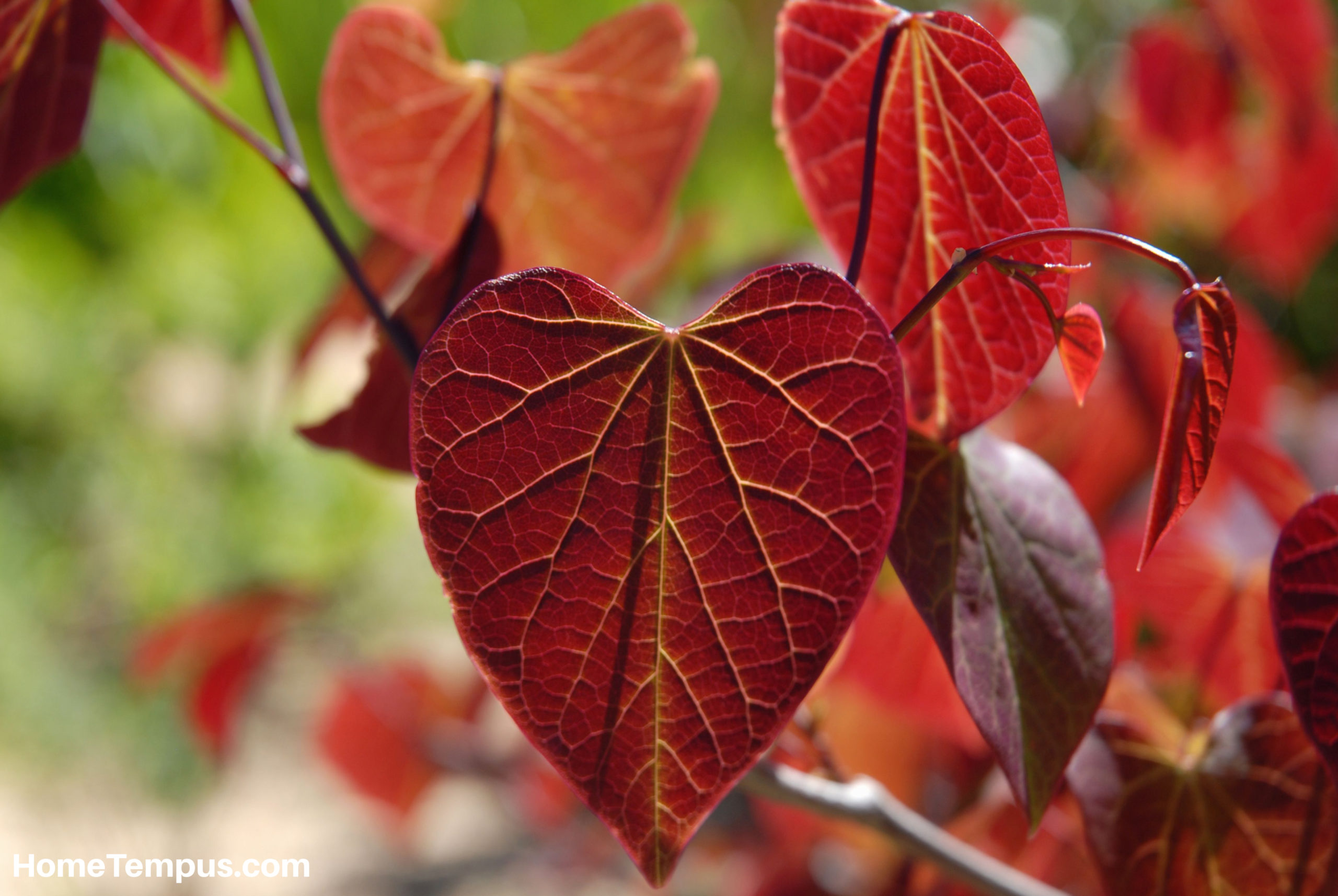Succulent lovers tend to panic when they see white mold on succulents, their precious babies. Or any white fuzzy substance on leaves, stems, or soil.
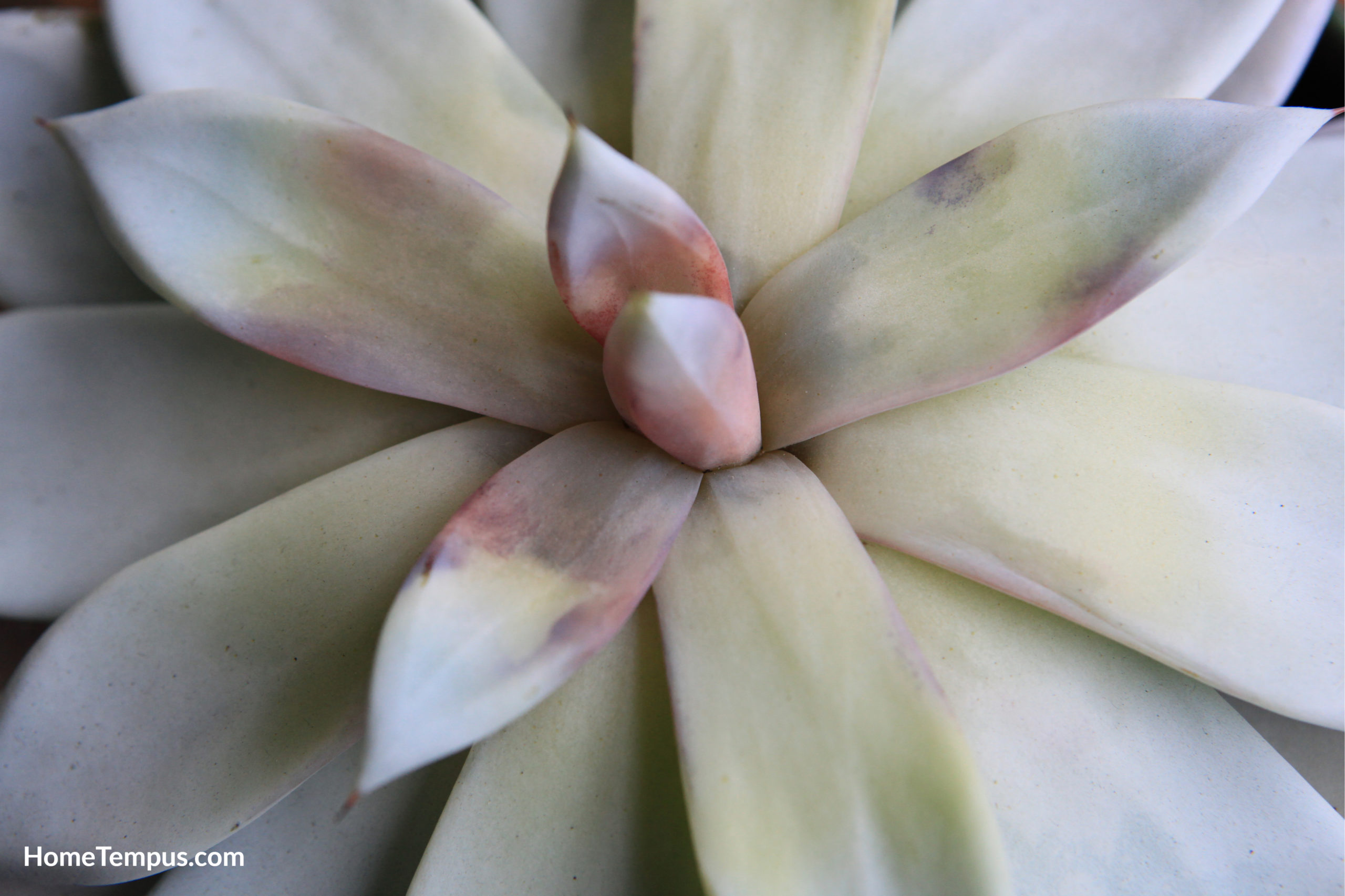
Is it a reason to panic? Not necessarily but it is time to get a bit of knowledge of the most common ailments that affect these normally resilient plants. That means talking about fungal diseases, how to recognize them and how to treat them.
What is white mold on succulents?
There is a lot of confusion about what is the white stuff on the leaves and stems of succulents. Is anything fuzzy and white actually a white mold on succulent? Actually, not at all. It will surprise you to find out that white mold, Sclerotinia stem rot, does not affect succulents at all, but mostly soybeans.
Most of the time when we see white stuff on our succulents we see powdery mildew, a different fungus alltogether. We will get into more details about that later.
Mold is a type of fungus. And so is mildew. And so are yeast and mushrooms. They are microscopic organisms that can be beneficial, edible or really damaging, like when they are growing in your bathroom or on your succulents.
White fuzzy substance on succulents – powdery mildew
Powdery mildew is mostly caused by the fungus Podosphaera xanthii. It is the most common problem with succulents because it thrives in the same conditions as succulents: warm and fairly dry.
The infection on your succulents may look just like the simple white, powdery coating. It can show up in only one spot, but most often it spreads quickly to other leaves and stems of your plant.
Powdery mildew looks unsightly but is harmless when it affects only one or two leaves and the plant looks like it is not suffering at al. But, as the infection spreads, and it spreads fast, you will spot damaged, deflated, and deformed leaves. Both leaves and stems first turn pale green and then yellow.
If the infection of your succulent is severe enough, it will start dropping leaves, it will not bloom and it might even die. What is even worse, powdery mildew easily spreads to other succulents in your collection and other plants in your garden.
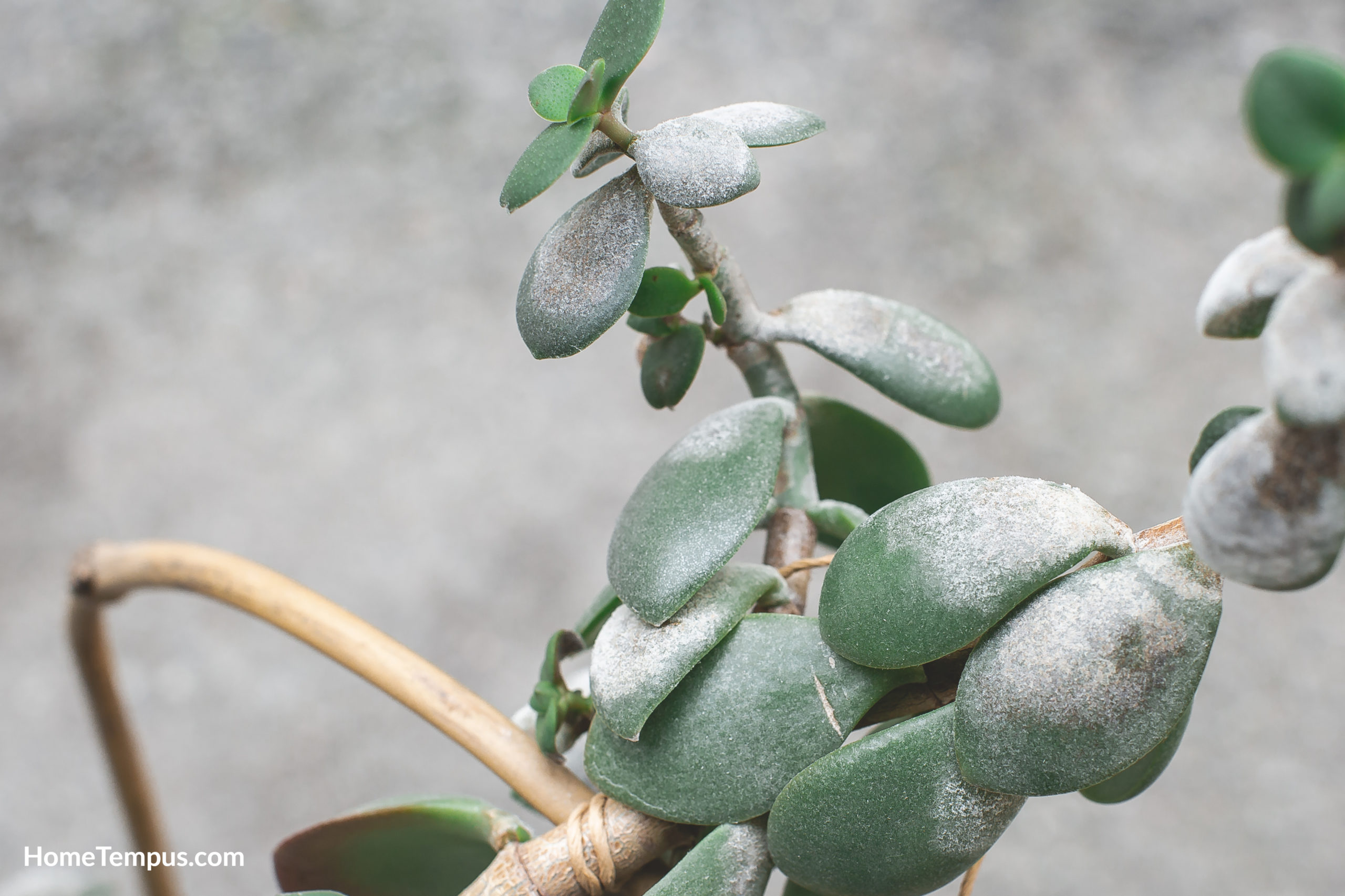
How to get rid of powdery mildew
The first step in treating powdery mildew is to gently remove all infected leaves and stems, any that started showing white fluffy coating or any signs of damage.
The second step is to apply a fungicide to the entire plant. The most effective are fungicides that contain sulfur, neem oil or triforine.
Remove the affected plant from your collection and from other plants for a while until the infection is under control. Just in case, spray all plants near your sick succulent.
Many gardeners have their own tried and tested methods for getting rid of powdery mildew. One of them is to mix baking soda with horticultural oil and spray the plant with that. Neem oil is used by gardeners who prefer organic methods. It is really up to you, as long as it works.
Horticulture vs Botany | What is the Difference?
How to prevent powdery mildew from happening again
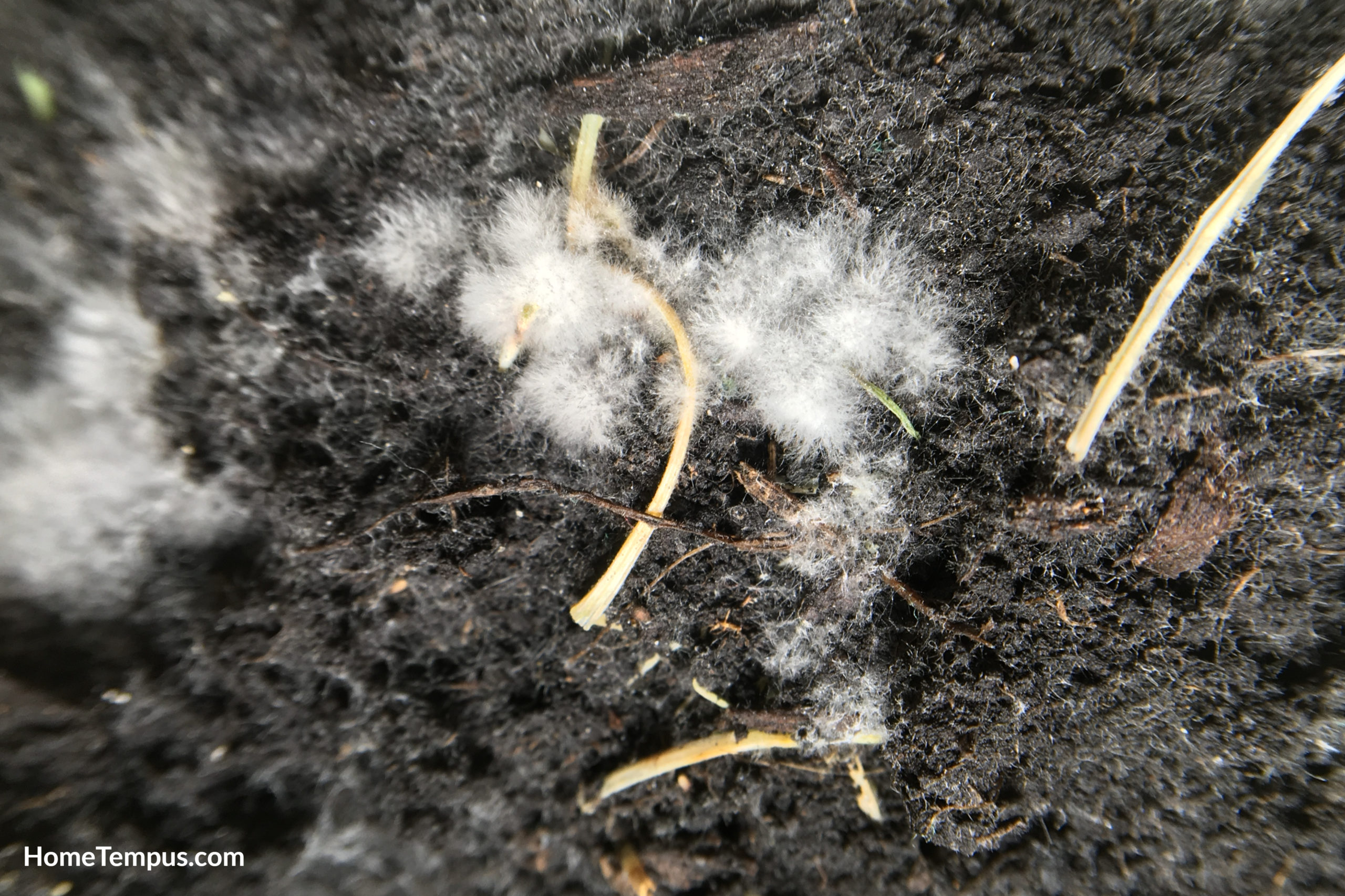
Now that we know what conditions powdery mildew likes, we know what to do to make its life more difficult.
- Get more space between your succulents to let the air circulate better. That prevents the production of mildew spores.
- Use a fan to make the air move if you keep your succulents at home.
- Water your succulents early morning and water them from the bottom, to lower the humidity – spores need it to thrive.
- Remove and isolate the infected plant as soon as you see the first signs of infection.
White mold on succulents soil – What it is and what causes it
Soil is naturally full of organic matter to feed your succulents so it is just as susceptible to fungal infections with mold or mildew as your plants. You may see white, grey, or black fluffy stuff growing from the soil. When it is white, it is usually mildew. When it is another color, it is usually mold.
Mold on the soil will not necessarily harm your plant. Not all fungi are harmful. But are you willing to risk it? Even if it does not directly harm your plant, the conditions that allowed it to thrive most probably will.
Once the mold is growing on the soil, if it is the harmful kind, it will grow on your plant as well and hurt it.
Some types of mold are also toxic to humans, especially people with asthma. So, say ‘no’ to mold.
How to get rid of the mold on my plant soil?
Most gardeners just grab the can of a commercial fungicide and spray the surface of the soil. Others prefer natural antifungals such as cinnamon. Whatever you use, first wipe all fluffy stuff from the soil before treating it.
The old-fashioned mix of water and baking soda is also one of the favorite gardeners’ remedies. Just make sure it is sufficiently diluted.
Succulents That Look Like Coral | Complete Care Guide
Other types of mold that affect succulents
While white mold on succulents is not something we have to worry about, other types of mold can seriously affect them.
Black Sooty Mold
Black sooty mold (Capnodium spp) is one of the least damaging molds on succulents. It grows on a sweet substance known as honeydew that is produced by aphids, whiteflies, mealybugs, and scale when these pests feed on your succulents.
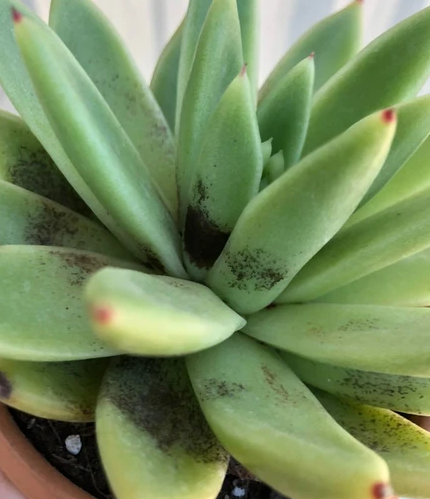
Black sooty mold looks like black fungal growth on the aerial plant parts, especially on the upper surfaces of the leaves. It does not physically damage the plant but it affects its ability to photosynthesize.
The solution is easy – once you get rid of these common succulent pests you will get rid of black sooty mold.
Start by spraying your plant with a garden hose to get rid of the honeydew. Then use your favorite insecticide to get rid of the succulent pests.
Leaf Spots
While succulents are pretty resistant to leaf spots, they can still be infected by this fungal disease caused mostly by Cercospora, anthracnose, and myrothecium. While the spots look ugly, can grow pretty big, and appear like shallow lesions on the leaves and stems, they do not actually harm the plant.
How to get rid of leaf spots
While the use of heavy antifungals is not recommended, you will want to get rid of ugly spots. Remove individual affected leaves and spray the plant with a mild solution of water and bicarbonate soda. Use a half teaspoon in one gallon of water.
Grey Mold
Gray mold or Botrytis cinerea or botrytis blight creates masses of brown grayish spores on the surfaces of the leaves and flowers of your succulents.
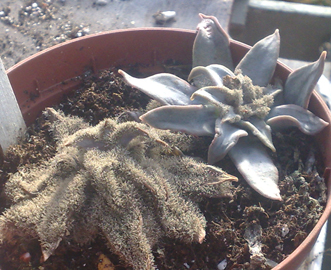
Gray mold mostly appears during the cool and wet weather in early spring and summer in a shady, humid environment with poor air circulation. It prefers older, already damaged, or dying plants. It spreads fast.
How to get rid of grey mold
Most gardeners use fungicides as a preventive measure for grey mold, but not for treating the infestation. You need to cut all affected parts of your succulents and burn them.
If you spot grey mold early enough, spray it with dishwashing detergent dissolved in water. Just make sure it does not contain bleach or degreaser.
Prevent the appearance of grey mold by making sure the soil in which your succulents grow dries totally before watering. Also, it is recommended to water them from the bottom and not at the surface of the soil.
How Many Tomato Seeds Per Hole For Tasty Tomatoes
Anthracnose
Cactus anthracnose is caused by Colletotrichum spp. Fungus can affect a range of succulents. It looks like a moist tan rot with orange, red, or pink pustules on the leaf surface. Spots are small at first but grow rapidly on leaves as well as crowns.
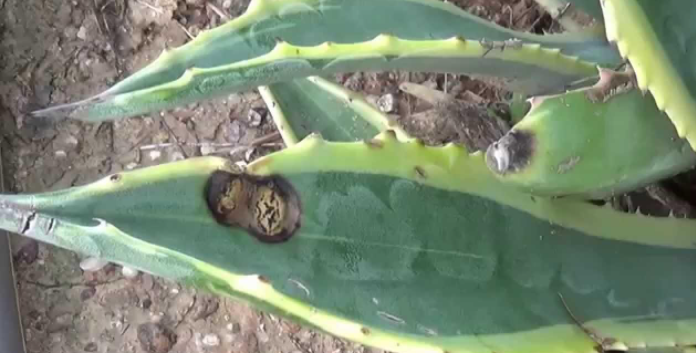
The only treatment for the infected succulent is to remove and burn all affected leaves.
Anthracnose can spread through contaminated soils, pots, and tools. Do not reuse garden soil and thoroughly disinfect garden tools and pots before using them again.
You also might want to spray the entire plant with a copper fungicide to destroy any possibly remaining fungi spores.
Fusarium Wilt
Fusarium wild is caused by fusarium oxysporum fungi. This fungus affects the ability of a succulent to take up water. It causes your plant serious stress, yellowing, wilting, and even death.
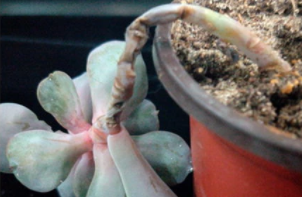
This fungus is incurable and is soil-borne. It infects the plant through the roots. It reproduces in the plant’s vascular tissues where it blocks them, making it impossible for the plant to transport water.
How to get rid of fusarium wilt
Unfortunately, there is no effective treatment for fusarium wilt. To prevent your other plants from infection, remove the infected plant and burn it. Burn the soil as well and disinfect the pot.
Root and Crown Rots
Most root and crown rots are caused by the fungus of the genus Phytophthora. It is difficult to diagnose the cause because the effects look like many other issues. A succulent just starts looking stressed, begins to wilt, loses colors, and eventually dies. The rot comes on slowly and causes the root to rot away.
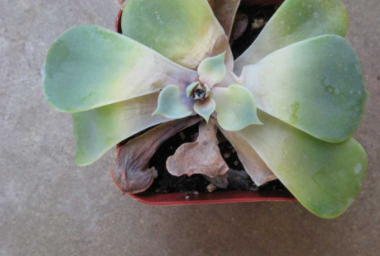
There is really no treatment for root and crown rot, but it can be prevented by using only well-draining soil to plant your succulents. Soil that drains well cannot be easily overwatered but it is important to water succulents only when the soil is completely dry to the touch.
If you are lucky, you can use undamaged leaves from your succulent to start the new plant.
Monkey Tail Cactus | All You Need To Know
Anthracnose
If your succulent has round, pale or brownish sunken spots, it is most likely infected by anthracnose, caused by fungi from the genus Colletotrichum. Eventually, the infected plant tissue will dry up and become as stiff as bark.
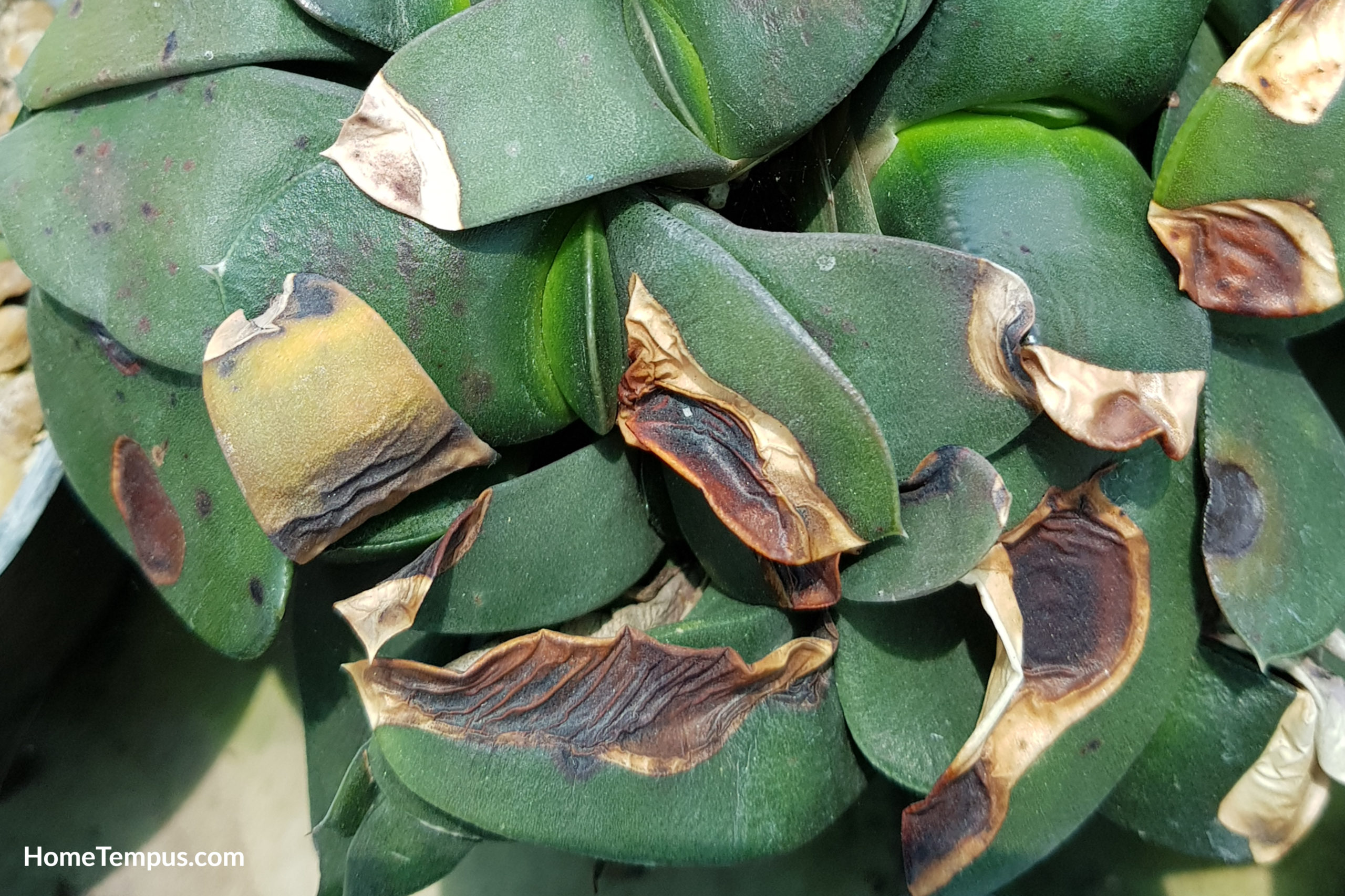
How to get rid of anthracnose
There is no effective treatment for anthracnose. To save your succulent, remove all affected leaves and stems and replace the soil with clean soil. Disinfect the pot before repotting the plant.
Do not forget to disinfect your garden tools as well.
To remove any remaining fungus spores, spray your plant with a fungicide with chlorothalonil, copper sprays that contain copper diammonia diacetate, propiconazole, or systemic fungicide thiophanate-methyl.
How to prevent white mold on succulents and other fungal diseases
Most molds thrive in a dark, humid and stuffy environment lacking air circulation. Unfortunately, if you are growing your succulents indoors or live in a hot, humid climate, such conditions are pretty common. There are a few rules to follow and a few mistakes people make that cause their succulents to become victims of fungal diseases.
Overwatering
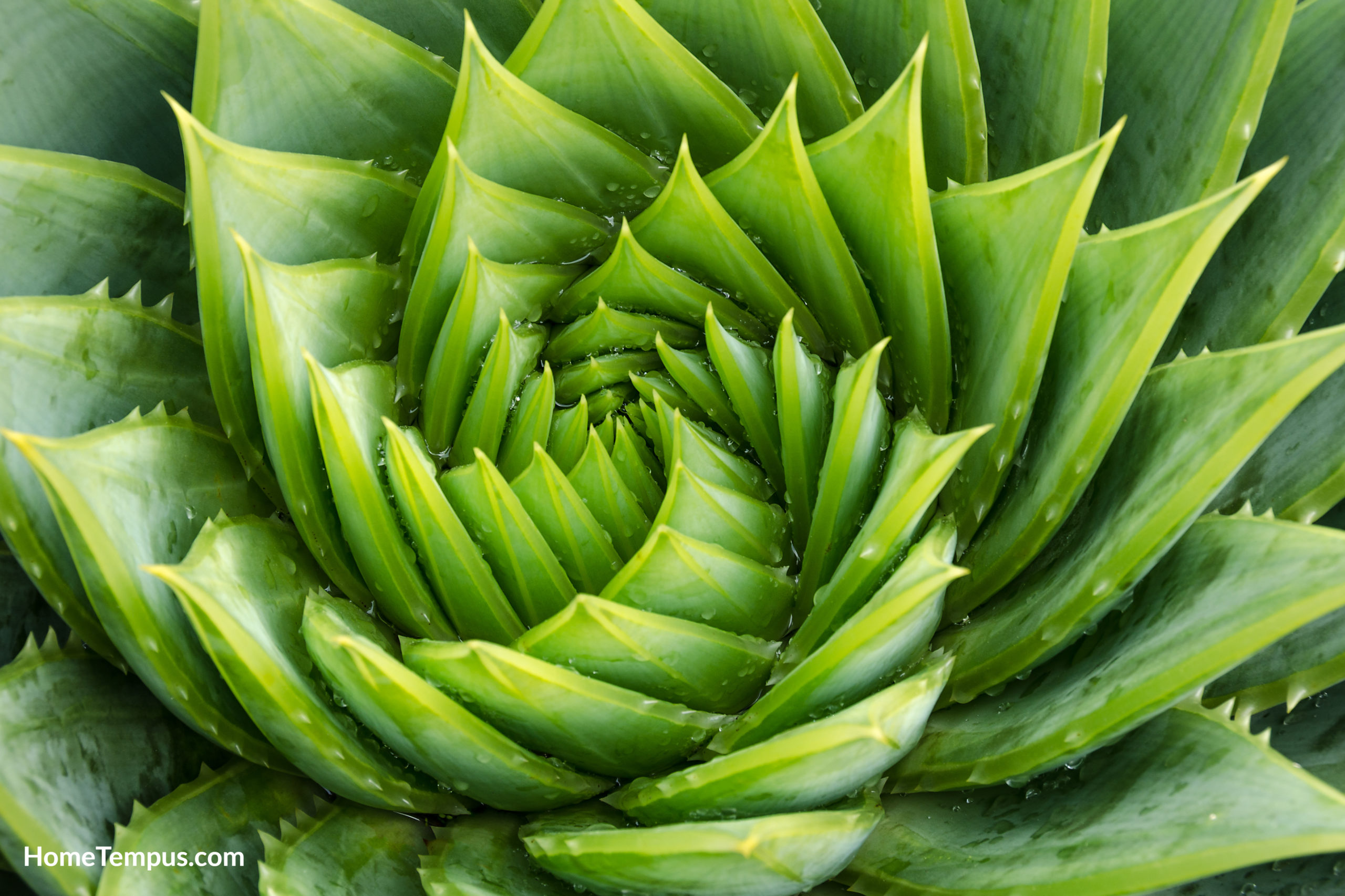
Overwatering is succulents’ worst enemy. They need much less water than most plants. The extra water you give them that they cannot absorb will be consumed by mold that lives in the soil, causing root rot.
This is particularly dangerous for succulents that live indoors where water has less chance to evaporate and there is less air circulation.
Succulents should be watered only when the soil is completely dry to the touch.
Poor Drainage
Poor drainage is one of the main reasons for excess moisture in the soil and the problem it causes. Possible reasons that cause bad drainage are poorly draining soil, wrong pot size, and no drainage hole in the pot.
When the pot is too big for your succulent, the roots cannot absorb the water the soil receives, causing the roots to rot.
Succulents should be planted in free-draining soil so no water remains standing. The best soil for succulents is the mix of commercial cactus soil with about 50 percent coarse sand added to it. Perlite instead of sand is fine too.
The best way to water succulents is to submerge the pot in water and then let it drain completely. For that to work, the pot has to have one large or few smaller drainage holes. Without drainage holes, excess water cannot escape, creating a too moist environment in soil, causing root rot.
Poor Air Circulation
Stuffy air without sufficient air circulation creates an environment in which mold thrives. Leave enough space between plants whether they are planted in the garden or are in pots inside. You might have to use a fan to add more air inside, where there is no wind.
Contaminated Soil
While soil needs to contain some microorganisms, too many can harm your succulents. Mold and mildew can be found in the soil if you reuse it from some other plant, or your compost was not mature enough when you used it.
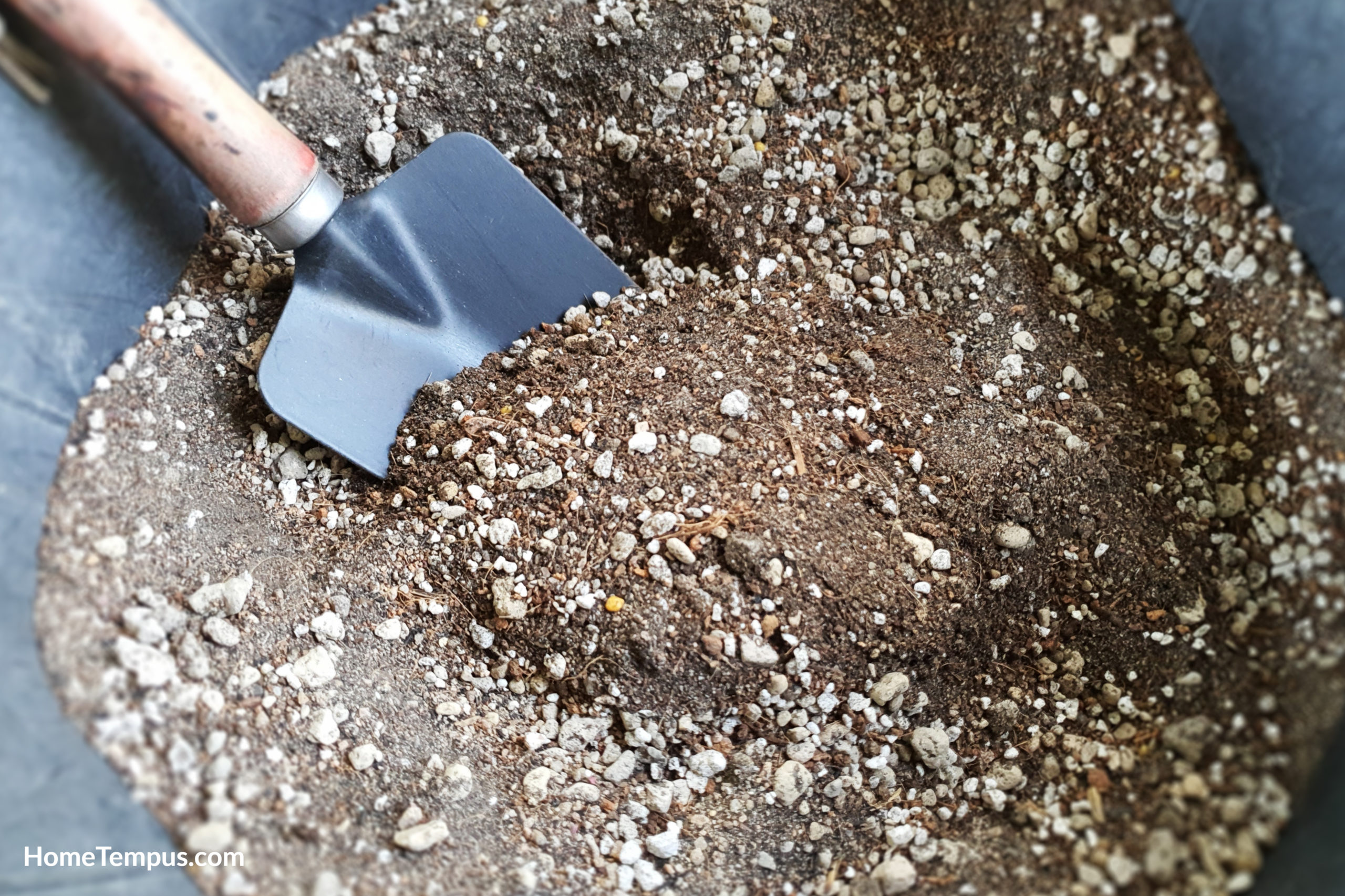
Ideally, use new commercial potting soil for your succulent and not garden soil. If you do not use the entire bag of potting soil, close it well and keep it in a dry place.
Decomposing leaves on top of the soil
Decomposing leaves and branches on top of soil create an environment for mold and mildew to thrive. Always remove all dead plant matter from the soil of your succulent. Their place is in the compost pile.
Conclusion
Finding any type of mold, mildew or white mold on succulents is always a reason for gardeners to worry. While most types of mold and mildew can be treated and plant-saved, it is always better to prevent problems by giving your beloved succulents the right conditions in which to live.

